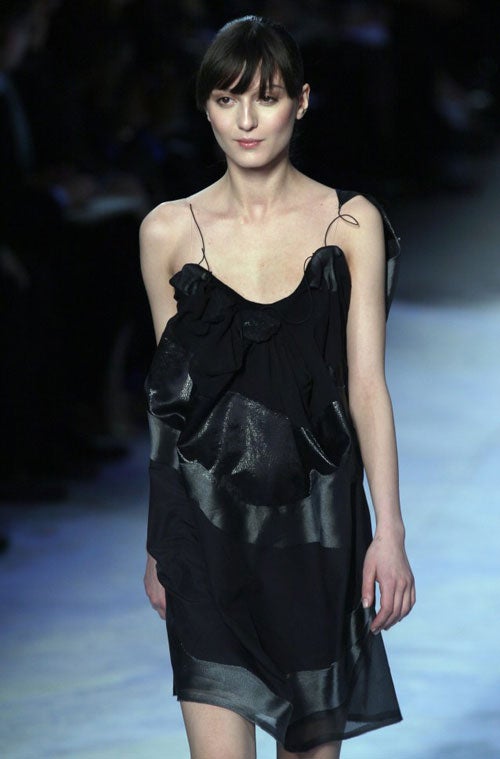Sports giant throws its weight behind Chalayan

"Linford Christie said to me 10 years ago, 'when I look good, I run faster'," Jochen Zeitz, chairman and CEO of the sportswear giant Puma told a Paris press conference yesterday, announcing the designer Hussein Chalayan's appointment as Puma's first ever creative director. Puma has also bought a majority stake in Chalayan's London-based fashion label for an undisclosed sum, ensuring the future of one of the world's most creatively accomplished designers is assured.
This is very good news for those who have followed the 37-year-old Cyprus-born designer's career path from the down-at-heel east London warehouse space of fashion folklore to the glittering Paris arena, but who have always known that his growth has been held back by financial constraint.
While Chalayan still lives and works in London he – like his contemporary Alexander McQueen – moved his twice-yearly women's ready-to-wear presentations to the more prestigious French fashion capital in 2001. Unlike McQueen, however, who is backed by the Gucci Group, Chalayan has not had the support of a major corporation until now.
Puma is owned by PPR (Pinault Printemps La Redoute) which also owns Gucci, so when Francois Pinault, the conglomerate's CEO took pride of place in the front row at Chalayan's show late the night before last the rumour mill began to whirl. That did not detract from the collection itself, however, which once again took a conceptual view – the suitably audacious subject of evolution was the designer's theme – and transformed it into technologically advanced, contemporary clothing.
Alongside sensitively crafted black tailoring and dresses that any aesthetically discerning woman would love to wear, came neck pieces of raw crystal from which more garments were suspended and even "monkey dresses" which came with their own baby apes attached – their tiny hands reached tenderly around models' necks where a shoulder strap might otherwise have been.
Chalayan said: "Although our business has grown steadily it has remained relatively small. This partnership will hopefully mean that my work will reach more people both through designing for Puma and the expansion of my own business."
A less optimistic frame of mind was in evidence earlier when Alessandra Facchinetti unveiled her first collection for the grand old house of Valentino. Only days after the great Roman couturier announced his retirement last year, Facchinetti's appointment as his successor was announced to a sceptical fashion press. This was, after all, the woman who had taken over from Tom Ford at Gucci and who had resigned after only two, critically ill-received collections in 2005. Her role at Valentino – a name associated with the world's most beautiful hand-crafted clothing designed to be worn by first ladies and princesses alike – is more daunting still.
If this unremarkable debut was anything to go by, the designer will have her work cut out for her. Facchinetti cited Valentino's signature looks of the late 1960s as inspiration, and it is true that there was a lightness to at least some garments that spoke of that period. However, where clothes might have been brought up to date – indeed that must surely be the point – they looked surprisingly old-fashioned.
Subscribe to Independent Premium to bookmark this article
Want to bookmark your favourite articles and stories to read or reference later? Start your Independent Premium subscription today.

Join our commenting forum
Join thought-provoking conversations, follow other Independent readers and see their replies